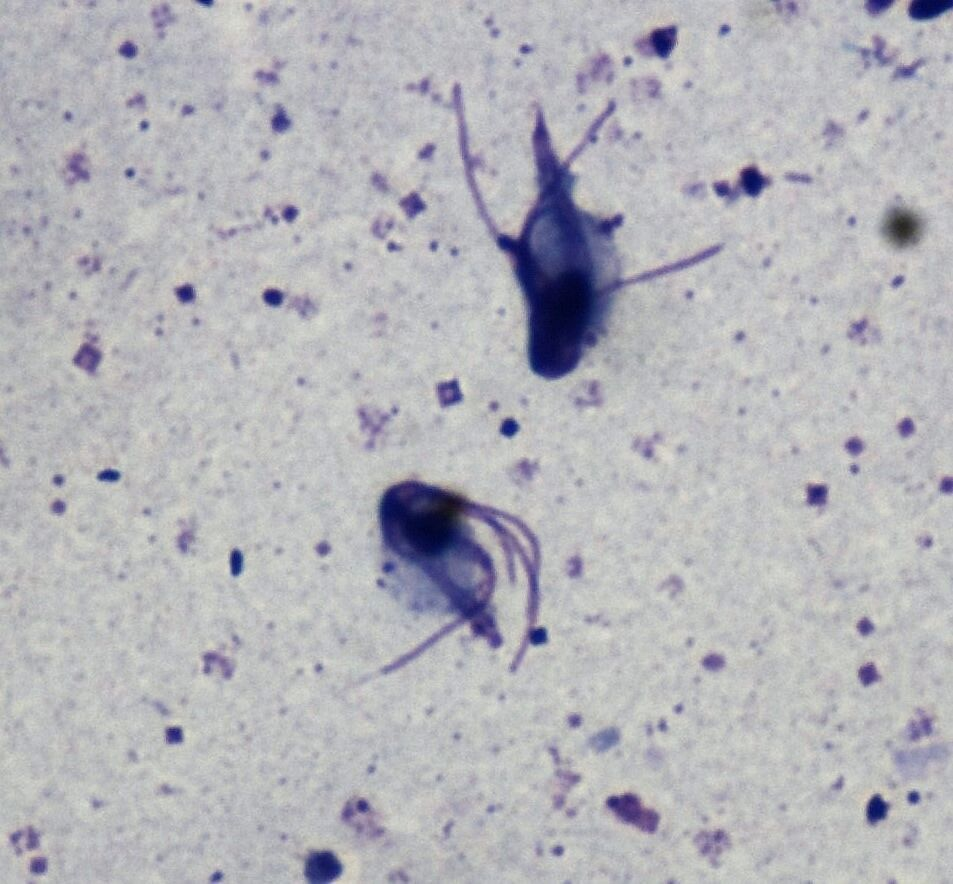Tritrichomonas
(Tritrichomonas foetus)
Tritrichomonas foetus causes chronic diarrhoea and is recognised as an emerging disease of cats worldwide.
Distribution
Worldwide.
Clinical signs
The most common clinical sign of Tritrichomonas infection in cats is subacute or most often chronic, intermittent large-bowel diarrhoea which is often ‘cow pat’-like, pale in colour and malodorous. Associated signs of colitis including fresh blood, mucous, faecal incontinence, tenesmus and flatulence may be observed [1,2]. Clinical signs are reported to persist for 5 to 24 months. Cats may also act as asymptomatic carriers.
Diagnosis
Tritrichomonas foetus infections in cats can be detected by direct microscopic examination of wet faecal smears, however this method is insensitive, and motile trophozoites (Fig. 1) must be differentiated from Pentatrichomonas hominis and Giardia trophozoites, which appear similar. Tritrichomonas foetus has a forward swimming rapid movement compared with the “falling leaf” movement of Giardia trophozoites. Tritrichomonas foetus (and P. hominis) can be cultured from faeces in special media (InPouch TF; BioMed Diagnostics, Inc, White City, OR USA). Both the aforementioned diagnostic techniques require faeces be freshly collected and not refrigerated. PCR for the detection and quantification of T. foetus DNA is offered by commercial labs in some countries.

Figure 1. Stained trophozoites of Tritrichomonas foetus in a faecal smear of a cat (Image credit: Dr. M. Watanabe)
Treatment
There are no products registered for the treatment of trichomoniasis in cats. Off-label ronidazole (30 mg/kg PO SID for 14 days) has been recommended in cats [1]. Ronidazole should not be used in cats that are systemically unwell, in pregnant or lactating female cats, or in kittens less than 12 weeks of age. Signs of ronidazole neurotoxicity include lethargy, inappetence, ataxia and seizures. Cats must be closely monitored and treatment discontinued if these side effects are observed [1].
Prevention and Control
Trichomoniasis is a particular problem in catteries and where large numbers of cats are kept together. Proper attention to hygiene, cleaning litter trays, and disinfection are important to minimise the spread of infection.
Public health considerations
None.
References
[1] Gookin JL, Hanrahan K, Levy MG. The conundrum of feline trichomonosis. J Feline Med Surg. 2017:19:261-274.
[2] Yao C, Köster LS. Tritrichomonas foetus infection, a cause of chronic diarrhea in the domestic cat. Vet Res. 2015:46:35
